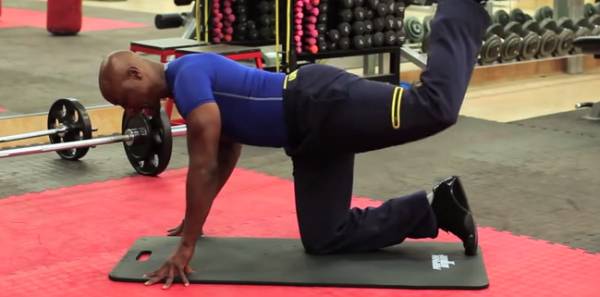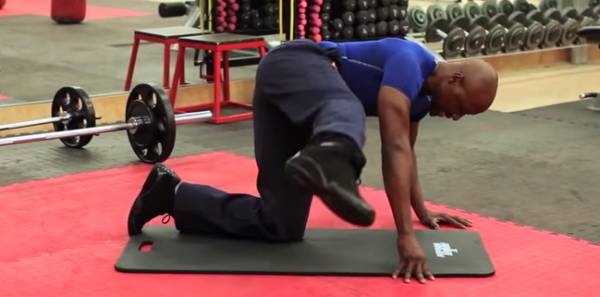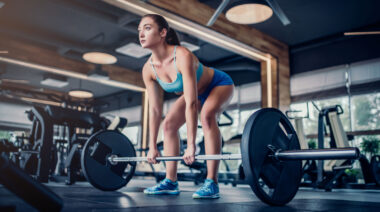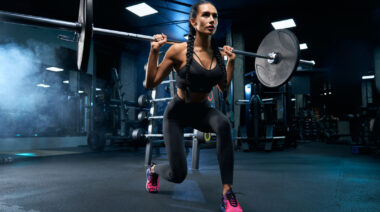As an orthopedic surgeon and fitness expert, I am often asked about gluteal development. The conversations about this muscle group are as common as those about the biceps and triceps, in my experience.
The questions about glutes come from both female and male athletes, as well as general fitness enthusiasts. All of whom truly want to increase their speed, power, and strength. The proper development of glutes can allow individuals to not only run, jump, and swim faster, but can also increases their explosive power during sporting activities.
“These muscles, when properly developed, also give you the advantage of squatting with more weight or doing better lunges with or without weights.”
The exercises for gluteal development must be executed with a specific strategy, focus and intention, which will benefit any athlete.
Understanding the Anatomy of the Glutes
I have use the phrase “lower core muscle group” to refer to the glutes because there has always been controversy about whether or not the glutes should be considered a part of the core. The core muscle groups are extensive and include a long list of muscles that run from varied parts of the spine, torso, and pelvis. These muscles are critical for appropriate posture, balance, and upright gait.
Understanding the anatomy of the glutes will broaden our knowledge of their importance during athletic training and performance. Here is a basic review of the function, attachments, and innervations of the gluteal muscles.
RELATED: The Best Leg Workouts
There are many muscles of the gluteal area, but let’s review three of the main players: gluteus maximus, gluteus medius and gluteus minimus. The origins and insertions of these muscles are fairly complex. These muscles originate from different parts of the pelvis and insert on different areas of the thigh and leg bones. Branches of the gluteal nerve innervate the gluteal muscles.
The gluteus maximus is an extensor of the trunk and thigh and also a lateral rotator of the thigh. The gluteus medius and minimus both medially rotate and abduct the thighs along with steadying the pelvis. There are also many other muscles of the gluteal region including the piriformis, gemelli, obturator internus, and quadratus femoris.
“Glute development is not simply about the aesthetics, but also, and more importantly, about improved athletic performance.”
By understanding this anatomy, it is clear that strong glutes allow us to perform a multitude of athletic movements more efficiently. These muscles, when properly developed, also give you the advantage of squatting with more weight or doing better lunges with or without weights.
The 2-Minute Powerful Glutes Workout
Squats and lunges can assist in gluteal and thigh development, but there are other exercises I have found to be even more effective and safer for many of my clients and patients. It is important to note that glute development is not simply about the aesthetics, but also, and more importantly, about improved athletic performance.
RELATED: The 21 Day Glute Goddess Workout
The Powerful Glutes Workout Part 1 video below will assist you in developing strong glutes that can help you to achieve your overall fitness goals and improve your athletic prowess. The basic glute exercises in this video can be done with or without weights depending on your fitness level. I recommend making a progressive evolution to using the weights as you become more comfortable and stable with the form and technique.
The first two exercises are variations of a classic and extremely effective exercise for the glutes. It has been labeled the donkey kick, all-four-hip extensions, and kick backs. The name is fairly inconsequential, but performing the exercise properly is your ticket to strong and powerful gluteal muscle development.
Donkey Kick
The basic donkey kick has two variants. The first involves a starting point of being down on the mat on your hands and knees. I suggest using a thick mat or cushions to protect your knees during these exercises.

For the first type of donkey kick, keep your leg straight and extend your hip. As you raise your leg behind you, bring it up higher than your spine. Concentrate on lifting the leg with the hip in extension and not simply swinging the leg, which is ineffective. Relax your neck during this exercise also.
The second variation has the same starting point on all fours, but it involves bending (flexing) your knee. After flexing the knee, lift the leg and extend the hip behind you.
I recommend 2 to 3 sets of 10-15 repetitions of these exercises, with or without weights.
Elbow to Knee
This exercise has the same starting position, but you must counterbalance on one side while lifting and flexing the knee and bringing the elbow to the knee. This is well demonstrated in the video.

Side Straight Arm Hip Abductions
The fourth exercise involves keeping the arm and leg straight at your side while simply abducting your hip. It is important to stay stable and to not tilt onto the counterbalanced side. This is a somewhat advanced exercise and can be very effective when executed properly.

Summary
Powerful glutes can assist any athlete or exercise enthusiast in attaining a higher level of sustainable strength and accelerated explosiveness in their sport of choice. The workout and exercises in this video will assist you on your fitness journey, as you remain consistent and committed.






